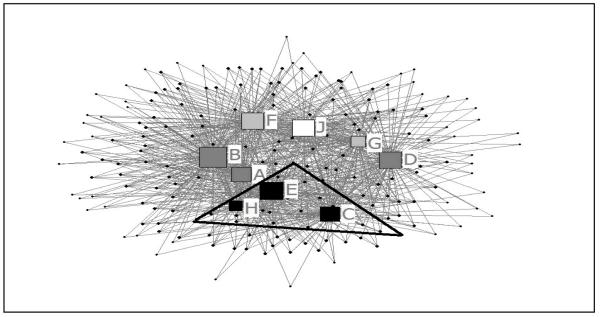Figure 1.
Two-mode affiliation network of health center utilization in Chicago Illinois.
Square nodes represent health centers and small circular nodes represent participants. Colors indicate factions (HHCs sharing same participants); and size of nodes reflect degree centrality (number of HHC nominations received). Affiliations are represented by grey edges, which connect participants with utilized health centers. Referring to Table 2, nodes C, E, and H (in black) represent north side health centers and are located within the same faction according to the faction analysis. The triangle encompasses these health centers from the same faction. Meanwhile Nodes A and B represent health centers on the west side and are located within the same faction, in addition to health center on the south side represented by node D. Nodes F, G, and J represent health centers on the south side and comprise the remaining two factions. This suggests that BMSM affiliate with health centers based upon a geographical distribution.

